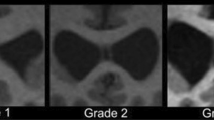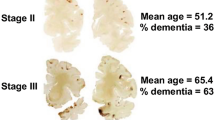Abstract
Medical imaging has made a major contribution to cerebral dysfunction due to inherited diseases, as well as injuries sustained with modern living, such as car accidents, falling down, and work-related injuries. These injuries, up until the introduction of sensitive techniques such as positron emission tomography (PET), were overlooked because of heavy reliance on structural imaging techniques such as MRI and CT. These techniques are extremely insensitive for dysfunction caused by such underlying disorders. We believe that the use of these highly powerful functional neuroimaging technologies, such as PET, has substantially improved our ability to assess these patients properly in the clinical setting, to determine their natural course, and to assess the efficacy of various interventional detections. As such the contribution from the evolution of PET technology has substantially improved our knowledge and ability over the past 3 decades to help patients who are the victims of serious deficiencies due to these injuries. In particular, in recent years the use of PET/CT and soon PET/MRI will provide the best option for a structure-function relationship in these patients. We are of the belief that the clinical effectiveness of PET in managing these patients can be translated to the use of this important approach in bringing justice to the victims of many patients who are otherwise uncompensated for disorders that they have suffered without any justification. Therefore, legally opposing views about the relevance of PET in the court system by some research groups may not be justifiable. This has proven to be the case in many court cases, where such imaging techniques have been employed either for criminal or financial compensation purposes in the past 2 decades.
Similar content being viewed by others
References
Krawczyk DC. Contributions of the prefrontal cortex to the neural basis of human decision making. Neurosci Biobehav Rev 2002;26:631–64.
Drevets WC, Ongür D, Price JL. Neuroimaging abnormalities in the subgenual prefrontal cortex: implications for the pathophysiology of familial mood disorders. Mol Psychiatry 1998;3(3):220–6. 190–1.
Miner LH, Jedema HP, Moore FW, Blakely RD, Grace AA, Sesack SR. Chronic stress increases the plasmalemmal distribution of the norepinephrine transporter and the coexpression of tyrosine hydroxylase in norepinephrine axons in the prefrontal cortex. J Neurosci 2006;26:1571–8.
Salmond CH, Menon DK, Chatfield DA, Pickard JD, Sahakian BJ. Deficits in decision-making in head injury survivors. J Neurotrauma 2005;22:613–22.
Damasio AR, Tranel D, Damasio H. Individuals with sociopathic behavior caused by frontal damage fail to respond autonomically to social stimuli. Behav Brain Res 1990;41:81–94.
Raine A, Lencz T, Bihrle S, LaCasse L, Colletti P. Reduced prefrontal gray matter volume and reduced autonomic activity in antisocial personality disorder. Arch Gen Psychiatry 2000;57:119–27.
Hayempour BJ, Rushing SE, Alavi A. The role of neuroimaging in assessing neuropsychological deficits following traumatic brain injury. J Psychiatry Law 2011;39(4):537.
Basu S, Kwee TC, Surti S, Akin EA, Yoo D, Alavi A. Fundamentals of PET and PET/CT imaging. Ann N Y Acad Sci 2011;1228:1–18.
Grafman J, Schwab K, Warden D, Pridgen A, Brown H, Salazar A. Frontal lobe injuries, violence, and aggression: a report of the Vietnam Head Injury Study. Neurology 1996;46:1231–8.
Bechara A, Damasio H, Damasio AR. Emotion, decision making and the orbitofrontal cortex. Cerebral Cortex 2000;10:295–307.
Raine A, Buchsbaum MS, Stanley J, Lottenberg S, Abel L, Stoddard J. Selective reductions in prefrontal glucose metabolism in murderers. Biol Psychiatry 1994;36(6):365–73.
Appelbaum P. Through a glass darkly: functional neuroimaging evidence enters the courtroom. Psychiatr Serv 2009;60:21–3.
Gurley JR, Marcus DK. The effects of neuroimaging and brain injury on insanity defenses. Behav Sci Law 2008;26:85–97.
Morse S. Mental disorder and criminal law. J Crim Law Criminol 2011;101:885–968.
Federal rule of evidence 702. 2000.
Harris v. U.S. Civil Action NO. 03–6430 in Eastern District of Pennsylvania (Nov. 2, 2005, unreported).
Yang Y, Raine A, Lencz T, Bihrle S, LaCasse L, Colletti P. Volume reduction in prefrontal gray matter in unsuccessful criminal psychopaths. Biol Psychiatry 2005;57:1103–18.
Rojas-Burke J. PET scans advance as tool in insanity defense. J Nucl Med 1993;34(1):13N–26N.
Fontaine A, Azouvi P, Remy P, Bussel B, Samson Y. Functional anatomy of neuropsychological deficits after severe traumatic brain injury. Neurology 1999;53:1963–8.
Borg J, Holm L, Cassidy JD, Peloso PM, Carroll LJ, von Holst H, et al. Diagnostic procedures in mild traumatic brain injury: results of the WHO Collaborating Centre Task Force on Mild Traumatic Brain Injury. J Rehabil Med 2004;43(Suppl):61–75.
Umile EM, Sandel ME, Alavi A, Terry CM, Plotkin RC. Dynamic imaging in mild traumatic brain injury: support for the theory of medial temporal vulnerability. Arch Phys Med Rehabil 2002;83:1506–13.
Hofman PA, Stapert SZ, van Kroonenburgh MJ, Jolles J, de Kruijk J, Wilmink JT. MR imaging, single-photon emission CT, and neurocognitive performance after mild traumatic brain injury. AJNR Am J Neuroradiol 2001;22:441–9.
Gennarelli T. Cerebral concussions and diffuse brain injuries. In: Cooper P, editor. Head injury. Baltimore: Williams & Wilkins; 1987. p. 108–24.
Auerbach S. The pathophysiology of traumatic brain injury. Phys Med Rehabil: State Art Review. 1989;3:1–11.
Nakashima T, Nakayama N, Miwa K, Okumura A, Soeda A, Iwama T. Focal brain glucose hypometabolism in patients with neuropsychologic deficits after diffuse axonal injury. AJNR Am J Neuroradiol 2007;28:236–42.
Parizel PM, Van Goethem JW, Ozsarlak O, Maes M, Phillips CD. New developments in the neuroradiological diagnosis of craniocerebral trauma. Eur Radiol 2005;15:569–81.
Braver TS, Barch DM, Gray JR, Molfese DL, Snyder A. Anterior cingulate cortex and response conflict: effects of frequency, inhibition and errors. Cereb Cortex 2001;11:825–36.
O’Connell MT, Seal A, Nortje J, Al-Rawi PG, Coles JP, Fryer TD, et al. Glucose metabolism in traumatic brain injury: a combined microdialysis and [18F]-2-fluoro-2-deoxy-D-glucose-positron emission tomography (FDG-PET) study. Acta Neurochir Suppl 2005;95:165–8.
Sutherland RJ, Whishaw IQ, Kolb B. Contributions of cingulate cortex to two forms of spatial learning and memory. J Neurosci 1988;8(6):1863–72.
Humayun MS, Presty SK, Lafrance ND, Holcomb HH, Loats H, Long DM, et al. Local cerebral glucose abnormalities in mild closed head injured patients with cognitive impairments. Nucl Med Commun 1989;10:335–44.
Devinsky O, Morrell MJ, Vogt BA. Contributions of anterior cingulate cortex to behaviour. Brain 1995;118:279–306.
Gray BG, Ichise M, Chung DG, Kirsh JC, Franks W. Technetium-99m-HMPAO SPECT in the evaluation of patients with a remote history of traumatic brain injury: a comparison with x-ray computed tomography. J Nucl Med 1992;33:52–8.
Kato T, Nakayama N, Yasokawa Y, Okumura A, Shinoda J, Iwama T. Statistical image analysis of cerebral glucose metabolism in patients with cognitive impairment following diffuse traumatic brain injury. J Neurotrauma 2007;24:919–26.
Gale SD, Baxter L, Roundy N, Johnson SC. Traumatic brain injury and grey matter concentration: a preliminary voxel based morphometry study. J Neurol Neurosurg Psychiatry 2005;76:984–8.
Haier RJ, Jung RE, Yeo RA, Head K, Alkire MT. Structural brain variation and general intelligence. Neuroimage 2004;23:425–33.
Lee B, Newberg A. Neuroimaging in traumatic brain injury. NeuroRx 2005;2(2):372–83.
Ruff RM, Crouch JA, Tröster AI, Marshall LF, Buchsbaum MS, Lottenberg S, et al. Selected cases of poor outcome following a minor brain trauma: comparing neuropsychological and positron emission tomography assessment. Brain Inj 1994;8:297–308.
Rushing SE, Lengleben DD. Relative function: nuclear brain imaging in United States courts. J Psychiatry Law 2011;39:567–94.
Oder W, Goldenberg G, Spatt J, Podreka I, Binder H, Deecke L. Behavioural and psychosocial sequelae of severe closed head injury and regional cerebral blood flow: a SPECT study. J Neurol Neurosurg Psychiatry 1992;55:475–80.
Brooks N. Personality change after severe head injury. Acta Neurochir Suppl (Wien) 1988;44:59–64.
Rosen J. The brain on the stand. The New York Times, 11 Mar 2007. Available via http://www.nytimes.com/2007/03/11/magazine/11Neurolaw.t.html. Accessed 20 July 2008.
Conflicts of interest
None.
Author information
Authors and Affiliations
Corresponding author
Additional information
This article has been withdrawn at the request of the Editor-in-Chief of European Journal of Nuclear Medicine and Molecular Imaging owing to the unexplained close similarity of some passages to parts of a previous publication [Rushing SE, Langleben DD. Relative function: Nuclear brain imaging in United States courts. J Psychiatry Law 2011; 39 (winter): 567–93].
The retraction note to this article can be found online at http://dx.doi.org/10.1007/s00259-013-2613-6.
About this article
Cite this article
Hayempour, B.J., Alavi, A. RETRACTED ARTICLE: Neuroradiological advances detect abnormal neuroanatomy underlying neuropsychological impairments: the power of PET imaging. Eur J Nucl Med Mol Imaging 40, 1462–1468 (2013). https://doi.org/10.1007/s00259-013-2401-3
Received:
Accepted:
Published:
Issue Date:
DOI: https://doi.org/10.1007/s00259-013-2401-3




